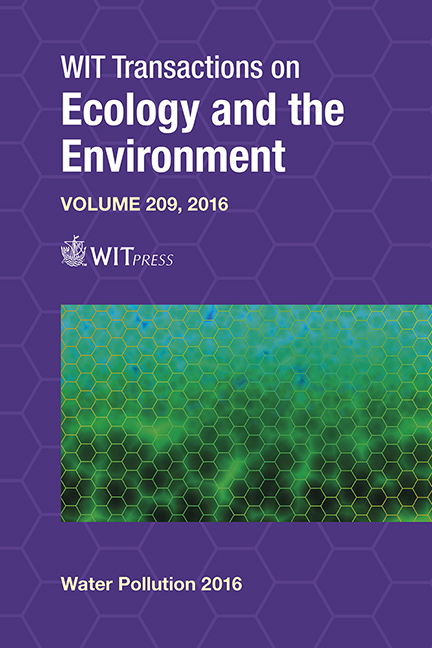Drinking Water Treatment Using A Groundwater Source-assessment Of Three Technological Variants Through Pilot-scale Investigations
Price
Free (open access)
Transaction
Volume
209
Pages
11
Page Range
79 - 89
Published
2016
Size
419 kb
Paper DOI
10.2495/WP160081
Copyright
WIT Press
Author(s)
N. Lungar, K. Bodor, A. Pacala, D. Landi, I. Vlaicu, F. Manea
Abstract
Pilot studies offer an economical method to test alternative and innovative treatment technologies for the development of new or enhanced existing water treatment technologies, without affecting the existing process. In this study, three technological variants for the drinking water treatment at pilot-scale were investigated using a groundwater source. Arsenic, total organic carbon, dissolved organic carbon, turbidity, iron and manganese exceeded the maximum allowance concentration imposed by the regulation for the groundwater source used in this study. The technological variants consisted of several unitary processes, e.g., sand-based filtration, ultrafiltration and reverse osmosis for the first variant, aluminum salts-based coagulation, filtration, ultrafiltration and reverse osmosis for the second variant and the third variant contained O2−based oxidation, filtration, ultrafiltration and reverse osmosis. The water flow of 750Lh−1 was tested for all technological variants for time duration of four hours and the water samples were monitored after each unitary process. By sand-based filtration step preceded or not by oxidation and coagulation, allowed that the turbidity and iron parameters to meet the requirements imposed by legislation. Arsenic was eliminated by filtering on a special iron-based filtration unit. Under studied hydrodynamic conditions, the coagulation process occurred on the sand-based filter that led to the filter fouling after two functioning hours, and no whole technological flow was achieved. Ultrafiltration and especial, reverse osmosis allowed removing the organic load expressed by TOC (total organic carbon) and DOC (dissolved organic carbon). Taking into account the technical performance and the simplicity, the first technological variant should be suitable for the drinking water treatment using the above-presented groundwater source. However, to avoid the membrane fouling for reverse osmosis and as consequence, the increased costs, the further optimization for the coagulation process is required to be coupled with the sand-filtration and integrated in the drinking water treatment technology.
Keywords
pilot-plant investigations, drinking water treatment, groundwater source, arsenic, organic load





